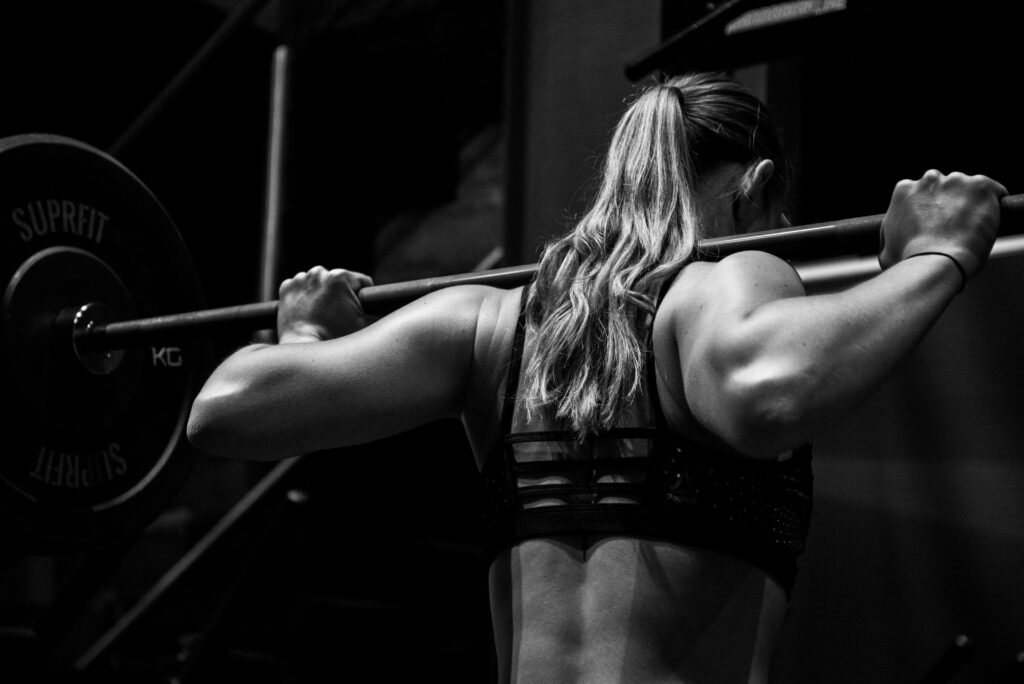Does Lifting Weights Help With Weight Loss?
Have you ever wondered if lifting weights can actually help you lose weight? In this article, we will explore the relationship between weight lifting and weight loss. Let’s break it down and see how incorporating weightlifting into your fitness routine can be beneficial for shedding those unwanted pounds.
The Benefits of Weight Lifting
Lifting weights is not just about building muscle mass. It offers numerous benefits that can aid in your weight loss journey. When you lift weights, you are not only burning calories during your workout but also long after as your muscles repair and grow stronger. This increase in muscle mass can help boost your metabolism, making it easier to lose weight and keep it off.
Let’s Talk About Muscle
Muscle tissue is more metabolically active than fat tissue, which means that having more muscle mass can help increase your resting metabolic rate. This is the number of calories your body needs to perform basic functions like breathing and circulating blood. By increasing your muscle mass through weight lifting, you can effectively raise your metabolism and burn more calories throughout the day.
Burn More Calories
Weight lifting can help you burn more calories overall, even when you’re not working out. This is known as the afterburn effect, or excess post-exercise oxygen consumption (EPOC). After a weight lifting session, your body continues to burn calories as it works to repair muscle tissue and replenish energy stores. This can lead to increased calorie expenditure and contribute to weight loss over time.
Building Strength and Endurance
In addition to boosting your metabolism and burning calories, weight lifting can help you build strength and endurance. As you increase the intensity of your workouts and lift heavier weights, you will become stronger and more resilient. This can translate to improved performance in other activities and workouts, allowing you to burn even more calories and achieve your weight loss goals faster.
Functional Strength
Weight lifting helps build functional strength, which is essential for everyday tasks and activities. It can improve your posture, balance, and coordination, making it easier to perform daily activities with ease. By strengthening your muscles through weight lifting, you can reduce the risk of injury and enhance your overall physical fitness.
Boost Your Endurance
Lifting weights can also help improve your cardiovascular endurance, allowing you to perform longer and more intense workouts. This can be beneficial for weight loss as it enables you to push yourself harder and burn more calories during each session. By incorporating weight lifting into your fitness routine, you can increase your overall stamina and endurance, helping you reach your weight loss goals more effectively.

The Role of Nutrition
While weight lifting can be a powerful tool for weight loss, it is important to remember that nutrition plays a crucial role in achieving your goals. To effectively lose weight, you need to maintain a calorie deficit, which means consuming fewer calories than you expend. Proper nutrition is essential for fueling your workouts, promoting muscle growth and recovery, and supporting overall health and well-being.
Protein Intake
Protein is a key nutrient for building and repairing muscle tissue, making it essential for anyone looking to lose weight and improve their body composition. Aim to include lean sources of protein in your diet such as chicken, fish, tofu, lentils, and Greek yogurt. Consuming an adequate amount of protein can help preserve muscle mass, enhance recovery, and support your weight loss efforts.
Balanced Diet
In addition to protein, it is important to maintain a balanced diet that includes a variety of nutrients to support your overall health and fitness goals. Focus on eating a mix of complex carbohydrates, healthy fats, fruits, vegetables, and fiber-rich foods. Avoid processed and sugary foods, as they can hinder your weight loss progress and negatively impact your energy levels and overall well-being.
Getting Started with Weight Lifting
If you’re new to weight lifting or unsure where to begin, don’t worry! Starting a weight lifting routine can be intimidating, but with the right approach, you can ease into it and begin reaping the benefits. Here are some tips to help you get started with weight lifting and set yourself up for success on your weight loss journey.
Consult a Professional
Before beginning a weight lifting routine, consider consulting a fitness professional or personal trainer to ensure you are using proper form and technique. They can help you create a personalized workout plan that aligns with your goals and fitness level, reducing the risk of injury and maximizing your results.
Start Slow
When starting a weight lifting routine, it’s important to begin with lighter weights and focus on mastering your form and technique. Gradually increase the weight as you become more comfortable with the movements and build strength. Remember, consistency is key, so aim to incorporate weight lifting into your routine regularly to see progress over time.

Designing Your Workout Plan
To effectively incorporate weight lifting into your fitness routine, it’s important to design a workout plan that suits your goals and schedule. Whether you’re looking to build muscle, lose weight, or improve your overall fitness, creating a structured plan can help you stay motivated and on track. Here are some key components to consider when designing your weight lifting workout plan.
Set Clear Goals
Before starting your weight lifting journey, establish clear and achievable goals that align with your weight loss objectives. Whether you want to increase muscle mass, lose body fat, or enhance your physical fitness, having specific goals in mind can help you stay focused and motivated throughout your workouts.
Choose the Right Exercises
When designing your weight lifting workout plan, be sure to include a variety of exercises that target different muscle groups. Incorporate compound exercises like squats, deadlifts, bench presses, and rows to engage multiple muscle groups simultaneously and maximize your calorie burn. Additionally, consider adding isolation exercises to target specific muscles and enhance your overall strength and definition.
Focus on Proper Form
Proper form and technique are crucial when lifting weights to prevent injury and ensure maximum effectiveness. Take the time to learn the correct form for each exercise and practice proper breathing techniques to optimize your performance and results. If you’re unsure about your form, don’t hesitate to ask a fitness professional for guidance and support.
Gradually Increase Intensity
As you progress with your weight lifting routine, gradually increase the intensity of your workouts by lifting heavier weights, performing more repetitions, or reducing rest time between sets. This progressive overload is essential for stimulating muscle growth, strength gains, and weight loss. Listen to your body, and challenge yourself to push beyond your comfort zone to see continued improvement.
Monitoring Your Progress
Tracking your progress is essential for staying motivated and making adjustments to your weight lifting routine as needed. By monitoring your performance, strength gains, and body composition changes, you can identify areas of improvement and celebrate your successes along the way. Here are some effective ways to monitor your progress and track your fitness journey.
Keep a Workout Journal
Maintaining a workout journal can help you document your workouts, track your progress, and identify patterns in your performance. Record the exercises you perform, the weight lifted, the number of repetitions completed, and any other relevant details to monitor your progress over time. This can also serve as a source of motivation and accountability as you work towards your weight loss goals.
Take Measurements
In addition to tracking your workouts, consider taking measurements of your body to monitor changes in your muscle mass and body composition. Measure areas like your waist, hips, thighs, and arms regularly to assess progress and adjust your workout and nutrition plan accordingly. Remember, weight is not the only indicator of progress, so pay attention to how your clothes fit and how you feel overall.
Set Milestones
Setting milestones and benchmarks along your weight lifting journey can help you stay motivated and focused on your goals. Establish short-term and long-term goals that are specific, measurable, achievable, relevant, and time-bound (SMART). Celebrate each milestone you reach and use them as stepping stones to propel you towards your ultimate weight loss success.

Conclusion
In conclusion, weight lifting can be a valuable and effective tool for weight loss when combined with a balanced diet, proper nutrition, and a structured workout plan. By lifting weights regularly, you can increase muscle mass, boost your metabolism, burn more calories, and improve your overall strength and endurance. Remember to consult a professional, set clear goals, and monitor your progress to stay on track and achieve the results you desire. With dedication, consistency, and hard work, you can see significant changes in your body composition and reach your weight loss goals in no time. So, grab those dumbbells, hit the gym, and start lifting your way to a healthier, leaner you!